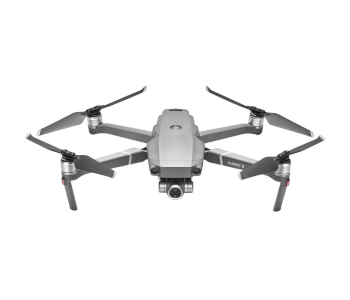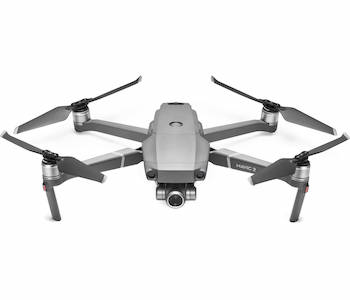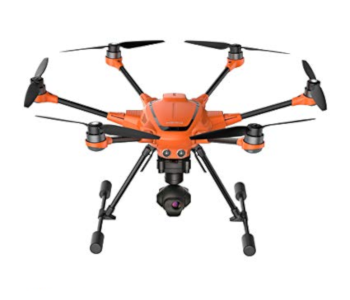How Drones are Used in Golf Courses
Golf is a sport that has seen better days. From 29.82 million golfers in 2006, the number has steadily decreased to around 23.82 million by the end of 2016. It doesn’t quite have the same appeal to the younger generations. The lack of a celebrity golfer at the level of popularity of Tiger Woods has also probably contributed to the waning number of golfers.
Fortunately, technology may be providing leverage to golf course owners. Through the power of drones, golf courses can be marketed better, and maintaining a golf course can be cheaper. What are the various ways in which drones are used in golf courses? What are the best drones for the job?
How are drones used in golf courses?
1. Planning and construction
From the initial stages of putting up a golf course, a drone could already prove to be an invaluable tool. The construction of a golf course is a massive and expensive project, and the topography of the project area plays a huge role in determining the amount of work that needs to be done.
Drones aren’t just good for giving you a bird’s eye view of the planned project site, but it can also create 3D topography maps using a process called photogrammetry. With this technique, a drone can capture hundreds of overlapping high-resolution images of your project site from a variety of angles. A piece of software then combines these photos to a fully navigable 3D model.
The model allows you to make a limitless number of distance, area, and volume measurements, which could come in handy when designing the golf course.
Once construction is underway, regular drone flybys can also be used to periodically check the status of the work. This is much faster and easier than having to be on the ground all the time to manage the project. Having eyes on the sky can also show things that would otherwise have been difficult to spot from the ground, such as potential hazards or uneven patches of grass.
2. Marketing
Once your golf course is up and running, it’s time to take advantage of the unique capabilities of drones for marketing. Most ready-to-use drones nowadays come with 4K video recording capabilities and mechanical gimbal stabilization that are perfect for capturing captivating aerial footage of your drone course. These videos are an excellent way of showing off how good your golf course looks at a scale that cannot be captured by videos on the ground.
One of the best ways to use drones to entice new golfers or to retain those who are already playing in your course is to do an Aerial Pathway video. This type of video follows the journey of the golf ball from the T to the hole. By depicting the changes in terrain, golfers can formulate a strategy in approaching the hole. An Aerial Pathway video is also a great way of showing off the beauty of your golf course.
You can make the virtual tour of your golf course by employing the same photogrammetry technique used in mapping the course’s topography. A 3D model isn’t just a technically accurate representation of your course – it’s also a fun and interactive tool for marketing. The model can be uploaded to your website, allowing potential visitors to go on a virtual tour that they can fully control. You can also have your golf carts equipped with the 3D model to make the trips between swings more fun.
3. Maintenance
Maintaining a large golf course is both hard and expensive. Not only do you have to make sure that trees, fences, and buildings are repaired as soon as they are damaged, but you also need to monitor the health of your turf. Fortunately, drones are more than capable to help you out on this end.
In the same way that drones gave you a quick overview of the course while it was being constructed, it can also be used to periodically check for structural damages. This can be particularly important after a bout of heavy rains or strong winds. If there are visible damages to the fairway and greens, you can quickly send off maintenance personnel to make the course playable as soon as possible.
When maintaining the health of your turf, it is a good idea to call on technology that will reveal what our eyes cannot see. We may see all of the turf as green, but they also reflect energy at frequencies that we cannot perceive. However, a drone equipped with Normalized Differentiation Vegetation Index (NDVI) sensors can pick up on these energy frequencies.
NDVI sensors work by recording the intensity of Near-Infrared Light, which is a measure of how receptive plants are to photosynthesis. By flying a drone with an NDVI sensor around your golf course, you can identify patches of unhealthy turf and allocate more irrigation or fertilizers. Aside from being able to spot problem areas earl, an NDVI survey also allows you to allocate resources optimally and drive down the costs of maintenance.
What are the advantages of using drones in golf courses?
Drones aren’t the cheapest piece of tech, and there’s quite a learning curve before you can use them properly. You can also play a professional to fly the drone for you, which will again add to your regular expenses. What’s the point of using a drone anyway?
1. Fast
Everything that can be done by a drone can also be done by a person. However, there’s no way for a person to beat the speed of a drone. Even surveying the entire extent of a golf course for damages can take a team of ten people several hours to finish. With a drone, you can probably cover the same area in just an hour or so. Best of all, you can capture videos with a drone that you can always come back to later in case you need to consult with professional repair services.
Even during the planning and construction of a golf course, using a drone can save you from a lot of unnecessary work and unreliable data. No longer do you need to have a person on the ground to monitor and report on the status of the project. You can simply have a drone fly over the course along a pre-planned flight path and review the video from the comforts of your office or home.
2. Cheaper in the long run
While drones aren’t cheap, they also aren’t that expensive especially compared to the other costs of building and maintaining a golf course. You can certainly get a high-quality camera drone for less than $2000. If you want an NDVI sensor for turf maintenance, then you’ll have to add just around $1000 for your initial expenditure.
Software for photogrammetry is typically available at a subscription rate – expect to spend $100 to $200 per month for the more professional versions.
If you’re not going to fly the drone yourself, then you’ll need to pay for the services of a professional drone pilot. The rates for drone services may vary from one state to another and depending on what service you need. For instance, drone mapping is typically more expensive than drone photography or filmmaking. In any case, you can expect to pay at least $1000 for a professional drone job.
These expenses may seem like a lot, but what you’re saving on are the costs of improper or delayed maintenance, poor infrastructure planning, and the wage of the several people it will take to do the job of a single drone. There’s also the cost of the potential opportunity loss if you don’t make use of aerial videos to market your golf course, especially when other golf courses have more enticing marketing materials.
3. Unique capabilities
There is no other technology that can do what drones do at the same level of ease and cost. Before drones were common, the only way to capture aerial photos, videos, or data was to fly a helicopter with a dedicated operator on board with the necessary equipment. There were several disadvantages to this approach. It was more dangerous for everyone involved, the helicopter flights were not repeatable, and hiring a helicopter was very expensive.
Before photogrammetry using camera drones, coming up with a topography model of an area involved having surveyors on the ground making slope and terrain measurements. While this was a very accurate method, it would also have taken several weeks for a single team of surveyors to collect topography data for an area the size of a typical golf course. A drone only needs several minutes to collect the necessary photos, which are then processed right away by dedicated software. You can essentially have a 3D model of your golf course in just a few days of work.
NDVI sensors are some of the best accessories you can get for a drone. It allows a drone to collect data that would otherwise have been invisible to us. The unique ability of NDVI sensors combined with the speed with which drones can cover vast areas makes a really powerful combination for golf course maintenance.
Top 3 best drones for golf courses
1. DJI Mavic 2 Pro

The good thing about photogrammetry as a mapping technique us that it only requires a good camera drone, of which there are several available in the market. However, we appreciate the convenience of an ultra-portable drone, and in that regard, there’s nothing quite like the Mavic 2 Pro.
The Mavic 2 Pro is one of the latest iterations of DJI’s line of ultra-portable Mavic drones. This has one of the most capable cameras in the industry today with the 1-inch CMOS sensor that can capture 20 MP stills and 4K stabilized videos. Its small size makes it capable of flying under trees, which should give your marketing videos a more daring flavor.
The Mavic 2 Pro may be one of the premiere ultra-portable drones from DJI, but it should still be very affordable at less than $2000. If you want to do an NDVI survey, then you can get a compatible attachment from third-party companies. Despite the Mavic 2 Pro being more than a year old, it’s still kicking as one of the best ultra-portable drones in the market today.
2. DJI Mavic 2 Zoom

Released at the same time as the Pro version, the Mavic 2 Zoom will give its twin a run for its money. Instead of a Hasselblad camera, it features a 2x optical zoom lens and a 2x digital zoom function. As one of the few drones with optical zoom capabilities, the Mavic 2 Zoom could certainly come in handy during the monitoring of your construction projects and regular inspections of your golf course.
Like its Pro counterpart, the Mavic 2 Zoom can fly up to 31 minutes on a single battery cycle. This extended battery time is very useful if you need to fly across the whole golf course, especially when you’re collecting critical data for mapping or NDVI analysis. It has an omnidirectional obstacle avoidance system, so you don’t have to worry as much about crashing into trees or other obstacles.
What the Mavic 2 Zoom lacks in camera capability, it makes up for with more creative camera features. Don’t get us wrong, though – the Mavic 2 Zoom is still a heavyweight in the camera front, with the ability to capture 12 MP stills and 4K videos at 30 fps. It’s also a few hundred dollars cheaper than the Mavic 2 Pro.
3. Yuneec H520

Just to stress that DJI isn’t the only brand of professional-grade drones around, we’re featuring the H520 – Yuneec’s flagship drone with a hot-swappable payload. With a wide range of compatible cameras, the H520 is one of the most versatile drones around which can be useful in golf courses and beyond. Whether you’re looking for a high-speed camera, a wide-angle camera, or a thermal IR camera, Yuneec should have something right up your alley.
The H520 features Yuneec’s characteristic six-rotor design. Aside from the added reliability and stability, the design makes the H520 look much more professional, which may leave an impression on your patrons. The ST16S Ground Station that comes with the H520 is one of the best in the business with its built-in 7-inch screen that displays real-time video and telemetry data. If you want to plan an automated flight over your golf course, then it’s as simple as drawing a path on the screen.
Compared to the Mavic 2 drones, the H520 seems overwhelmingly expensive. The base drone costs around $3000 without the payload attachments. Depending on what payload you need, you may end up spending $5000 to $6000 for a functioning H520 kit. It’s a huge investment, but that price tag is actually lower than those of the enterprise-level drones from other brands. If you want your golf course drone to look and feel professional, then the H520 is the way to go.
Final thoughts
A golf course may seem like an unlikely place to see a drone being used, but it won’t be the first time that we will see drones in surprising spots. Considering how vast golf courses are, relegating a few jobs to drone does seem like a sensible idea after all. Whether you’re planning on putting up a golf course or already operating one, it’s still the perfect time to start using a drone to save on time and expenses.

